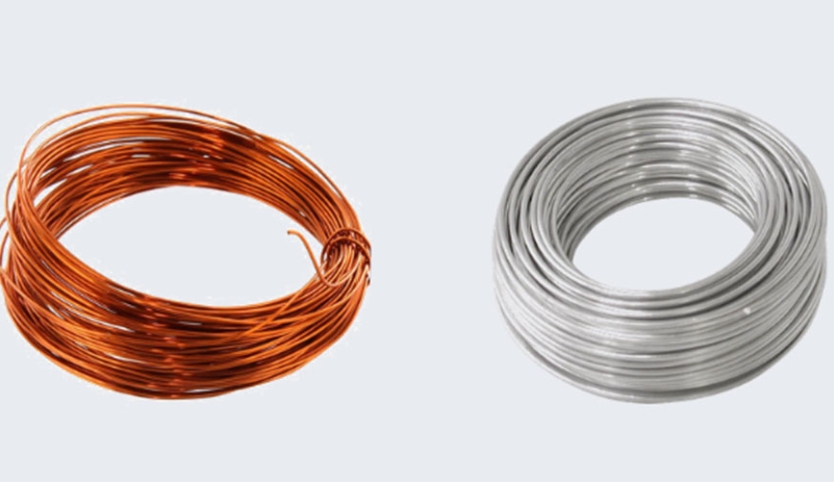
News

Low voltage dry type transformers can have windings made of either copper or aluminum. They have a primary winding to get power from the source and a secondary winding to supply power to the load. These windings, made of insulated conductive wires, function the same regardless of the material.
In North America, transformers of 15 kVA or higher usually use aluminum for windings. In most other parts of the world, copper is more common. There are two main reasons for choosing aluminum. First, it has a lower initial cost. Copper's price has fluctuated a lot more historically, making it more expensive to buy. Second, aluminum is very ductile and easier to weld into windings, cutting manufacturing costs. But copper is more reliable for connections, while the reliability of aluminum connections depends on the installer's skill.
When heated to the same temperature, aluminum expands nearly one-third more than copper. If bolted connections aren't done right, this can cause problems like loose joints. To fix this, we can use spring-loaded connections and special washers for aluminum windings. With the right hardware, aluminum joints can be as good as copper ones.
Copper conducts heat better than aluminum under the same design, geometry, and wire diameter. So, copper can cool the hot spots in the windings faster, keeping them cooler and ready for a wider range of loads. To make aluminum coils carry the same current as copper ones, the aluminum coils need to be about 66% larger in cross-section. But cooling the coils isn't the most important thing when choosing the material. Manufacturers use a mix of methods like conductor shaping, air ducts, cooling oil, coil geometry, and cooling surface area to control the temperature, no matter what the coil material is.
Aluminum is only 61% as conductive as copper of the same size. So, aluminum transformers seem to have more energy losses. But aluminum transformers are designed with larger conductors to keep the temperature down. Because of the larger cross-section of aluminum windings, the average energy losses of aluminum and copper transformers are about the same.
In practice, the high cost of copper makes manufacturers not want to stock different sizes. This limits how well we can reduce energy losses with copper windings. Aluminum windings are cheaper and can be sized to reduce losses, sometimes even better than copper transformers. The core losses of low-voltage dry-type transformers don't depend on the winding material, so both aluminum and copper transformers have similar core losses. These factors mean we can design copper and aluminum transformers to have the same efficiency. And because aluminum is cheaper, we can make more efficient aluminum transformers at the same or lower cost than less efficient copper-wound ones.
When high peak current loads like AC drives with SCR controllers are connected to the transformer, strong electromagnetic forces can move or deform the coils and leads. Aluminum has a tensile strength only about 38% of copper's with the same design and cross-section. But aluminum transformers have windings about 66% larger in cross-section. Using larger aluminum conductors makes the winding strength of aluminum almost as good as copper. The tensile strength of the material isn't the most important thing for handling mechanical stress. Lead support and coil balance matter more.
Connectivity is a big concern with aluminum-wound transformers. When exposed to air, copper and aluminum oxidize. The oxides, especially the insulating aluminum oxide, need to be cleaned regularly to keep bolted connections working. For all conductors, we need good joint compounds to clean the joints and prevent oxidation.
Making bolted aluminum connections is a well-known process. We should never bolt unplated aluminum and copper together. There are reliable ways like welding and explosive bonding, but manufacturers don't use them. Most connections between copper and aluminum conductors are made by tinning or silver-plating the conductors in the bolted connection. For example, connections between copper cables and aluminum transformers often use tinned aluminum lugs. These lugs are rated for connecting copper to metal (copper or aluminum) and have been reliable for over 30 years.
In the end, choosing the transformer winding material depends on personal preference. Copper is more expensive and needs to be chosen carefully based on the application. Low-voltage transformers often use aluminum windings because of the cost savings. The advantages of copper over aluminum can be overcome with the right compensations for aluminum. Although making reliable aluminum connections takes some skill and cost, compared to the benefits of aluminum, it's becoming less of a worry. So, before spending more on copper-wound transformers, buyers should think about the reasons for choosing copper in terms of specs, cost, and alternatives.
Contact a Xinghe representative today to learn more about our Transformer.